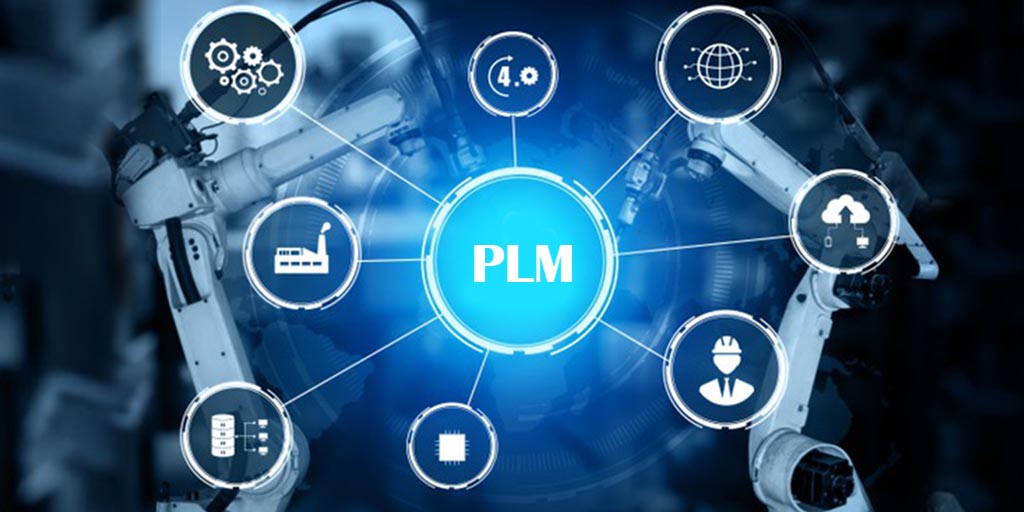
17 Jul PLM Fundamentals
With today’s dispersed workforce, teams need a secure and collaborative environment to share information and manage processes. This is even more critical when external stakeholders such as suppliers and customers participate in the design process.
A PLM software is designed to manage complex product information and workflow to facilitate collaboration at many levels. It stands for Product Lifecycle Management connecting processes, people and data across the complete product lifecycle. In this article we discuss PLM fundamentals and how a PLM software integration can benefit your organization.
Product lifecycle phases
Before we jump into PLM fundamentals, it’s important to understand the different phases in a product lifecycle. A typical product lifecycle involves four phases: concept, design, production, and distribution.

The concept phase is the first phase in a product lifecycle that begins with an idea for a new product and involves brainstorming, research and ideation. This is followed by the Design phase where mockups and prototypes are created. This phase also involves testing the final design to see if it is ready for the market. The approved final design enters the production phase that involves sourcing of materials, pricing, timelines etc. This is followed by the last phase that includes the distribution and maintenance of the product. It involves warehousing, distribution and feedback from retailers, distributors and customers.
Why do you need a PLM software?
As discussed above, each of the phases in a product lifecycle involves multiple processes and people and is iterative on the previous phase. Since a product lifecycle contains several complex interconnected processes, it is crucial to use a standardized central system for efficient coordination.
A PLM software effectively manages all the elements that go into making a product and contains all the features necessary to facilitate the various tasks involved in the creation of a product. It enables collaboration for employees in different workgroups, suppliers, vendors and customers with a central repository of information.
Additionally, markets are moving quick, customers are demanding new products more often and competition is intensifying rapidly. A PLM system automates several processes that can give you a competitive advantage that you can’t afford to overlook.
Benefits of a PLM software
There are several benefits to a PLM software, the most important being availability and shareability of information from one single centralized platform. This enables consolidation of processes and makes tracking seamless adding to the following benefits.
Bringing products to market faster: Sharing of data is imperative in the successful creation of a new product. PLM software can be incorporated into mobile apps, design tools, and ERP systems making information sharing simple and time efficient. This in turn fuels acceleration of the product lifecycle and helps you bring products to market faster.
Reduction in Development Costs: Acceleration of product lifecycle directly cuts down the development cost associated with a product. Decrease in back and forth communication leads to an increase in quality, product output, and eliminates re-work.
Revenue Growth: Bringing products to market in a shorter time and reducing development costs contribute to revenue growth substantially. PLM software supports increased revenue by freeing up resources to drive innovation and keep you ahead of competition.
Improve Strategic Decision Making: With a central repository for all product data, access can be given to the right people at the right time. This can help them make more strategic and informed decisions based on past, current and future projects.
Eliminate Process Bottlenecks: PLM software minimizes delays and bottlenecks by providing the tools to design and define processes. Workflows, tasks, and milestones can be outlined to eliminate bottlenecks that could considerably slow down processes.
Conclusion:
The above-mentioned PLM fundamentals and benefits of a PLM are some of the reasons industry leaders are using PLM and the PLM market is expected to witness a huge growth. PLM is a holistic, automated, streamlined approach to managing products from conception to design to development and finally deployment. Stay relevant and optimize processes by using a PLM system that works best for you. To start your PLM journey, contact one of our experienced professionals at Cyber Chasse and let us uncover this profit-driven advantage.




